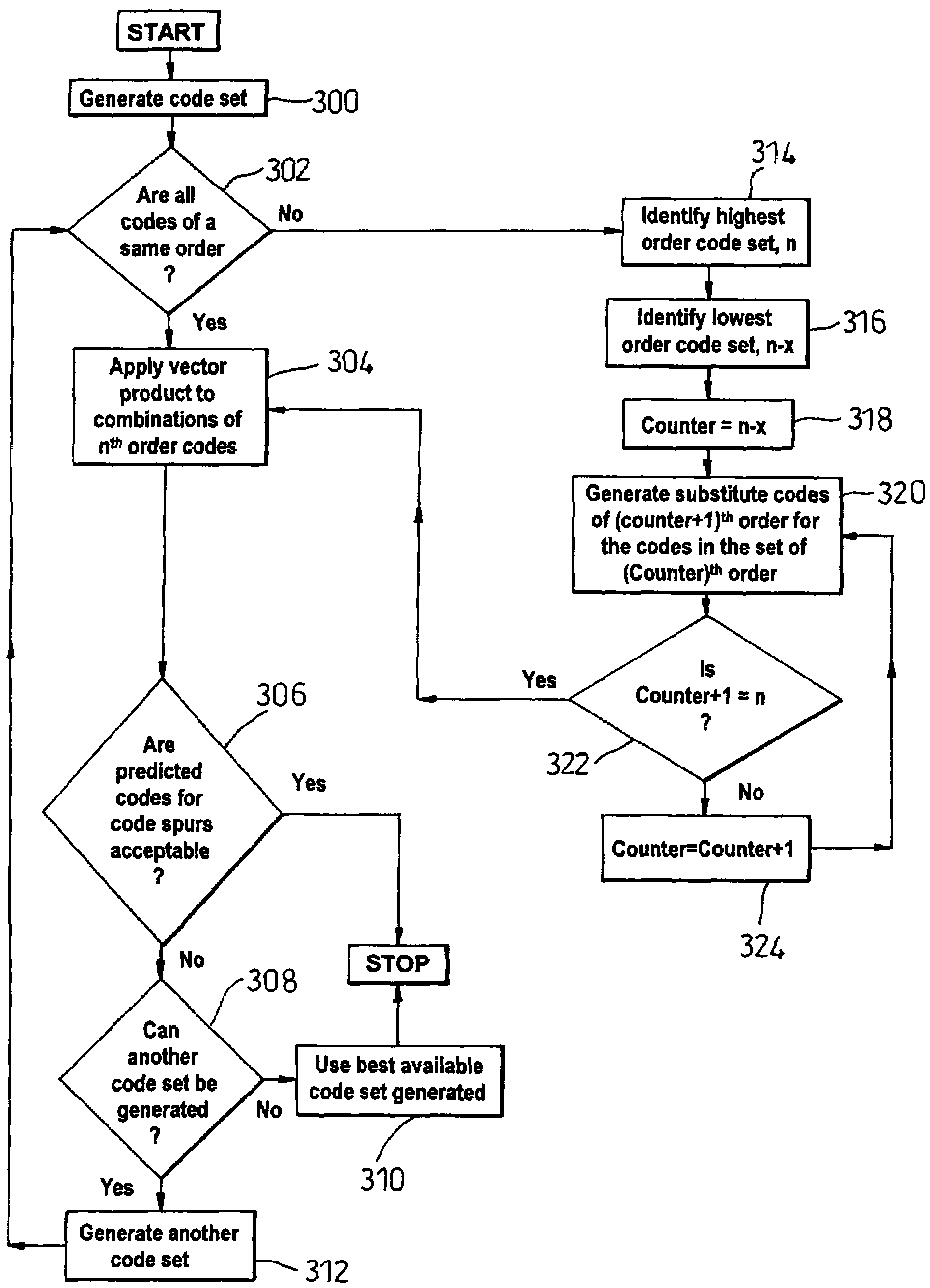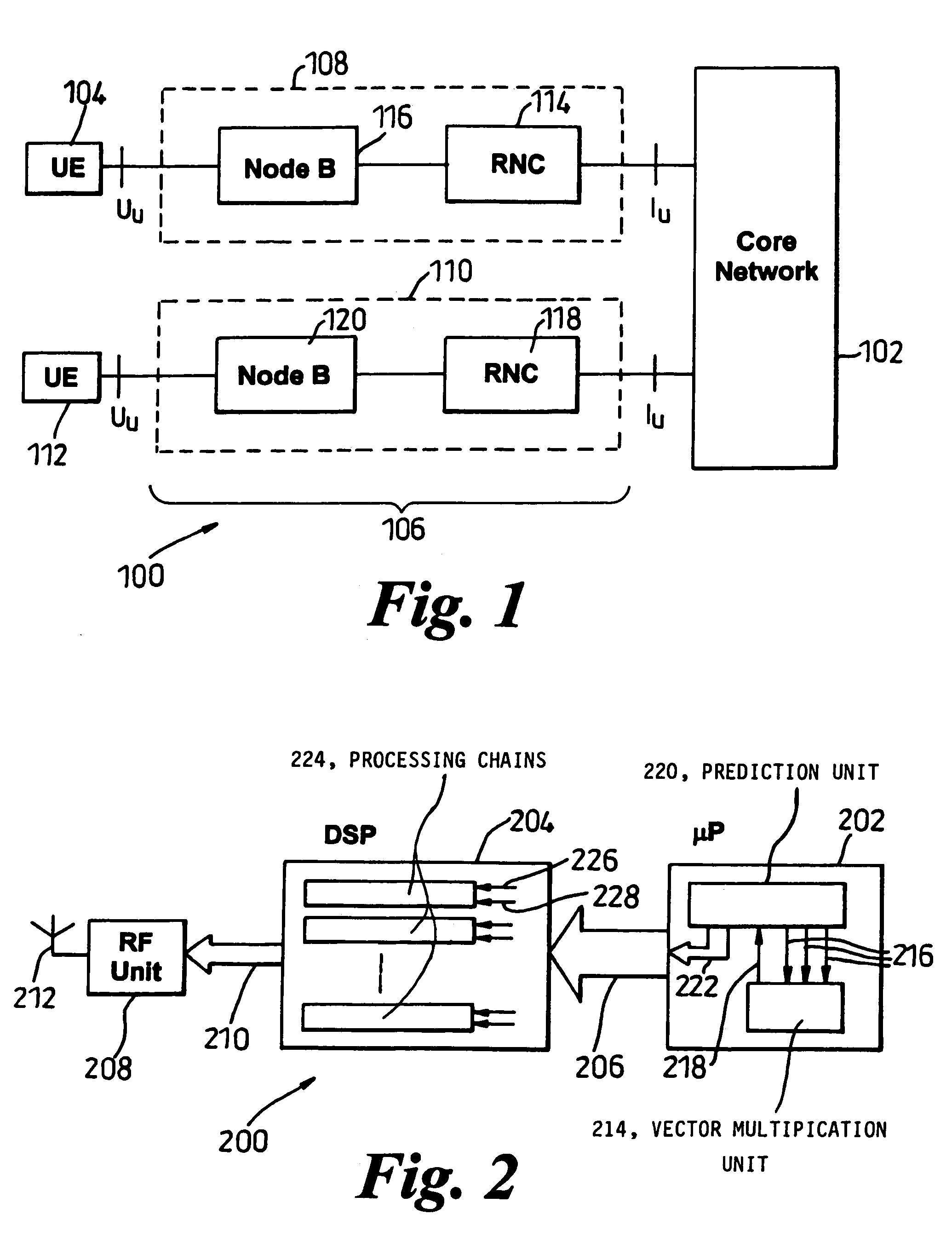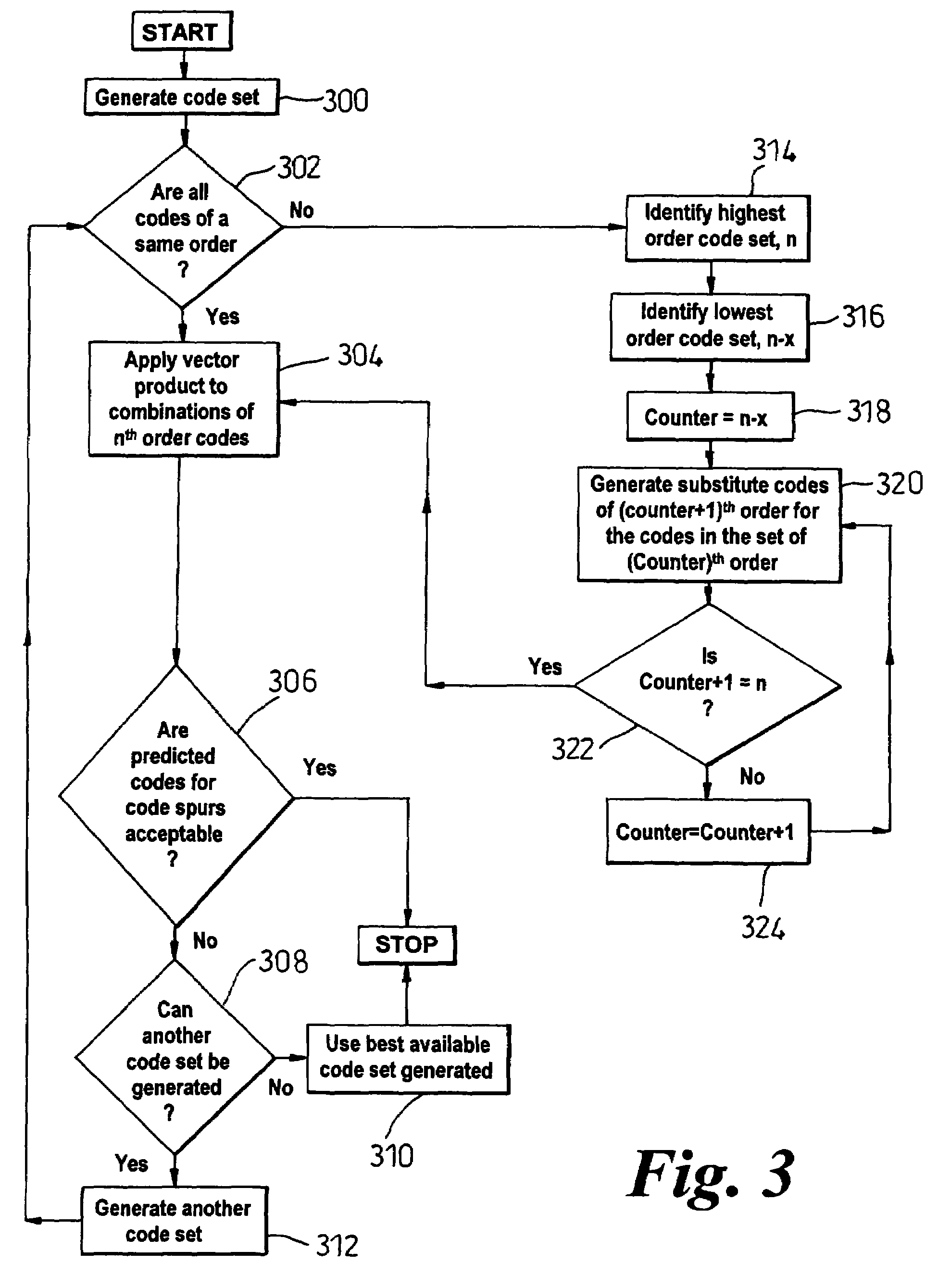Method and apparatus for predicting a signalling code corresponding to a code spur
a signalling code and apparatus technology, applied in the field of apparatus for predicting the signalling code corresponding to the code spur, can solve the problems of spectral regrowth, order intermodulation products (pars), degradation of the quality of in-channel modulation, and to-average power ratios
- Summary
- Abstract
- Description
- Claims
- Application Information
AI Technical Summary
Benefits of technology
Problems solved by technology
Method used
Image
Examples
Embodiment Construction
[0032]Referring to FIG. 1, a communications system 100, for example, a Universal Mobile Telecommunications System (UMTS) employs a multiple access technique, for example a spread-spectrum multiple access technique, such as a W-CDMA technique.
[0033]The UMTS comprises a core network 102 capable of communicating with a first User Equipment (UE) unit 104 via a UMTS Terrestrial Radio Access Network (UTRAN) 106. The core network 102 communicates with the UTRAN 106 via a first interface IU. The first UE unit 104 is capable of communicating with the UTRAN 106 via a Radio Frequency (RF) interface UU. In accordance with the UMTS standard, the core network 102, the UTRAN 106 and the first UE unit 104 provide an access stratum (not shown) and a non-access stratum (not shown). The UTRAN 106 comprises a first Radio Network Subsystem (RNS) 108 and a second RNS 110, the first and second RNSs 108, 110 being capable of communicating with the core network 102. The first RNS 108 is also capable of comm...
PUM
 Login to View More
Login to View More Abstract
Description
Claims
Application Information
 Login to View More
Login to View More - R&D
- Intellectual Property
- Life Sciences
- Materials
- Tech Scout
- Unparalleled Data Quality
- Higher Quality Content
- 60% Fewer Hallucinations
Browse by: Latest US Patents, China's latest patents, Technical Efficacy Thesaurus, Application Domain, Technology Topic, Popular Technical Reports.
© 2025 PatSnap. All rights reserved.Legal|Privacy policy|Modern Slavery Act Transparency Statement|Sitemap|About US| Contact US: help@patsnap.com



